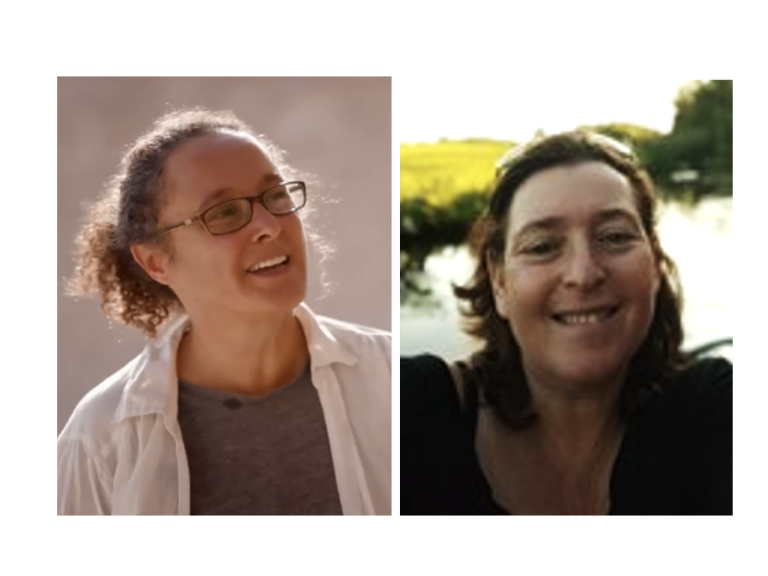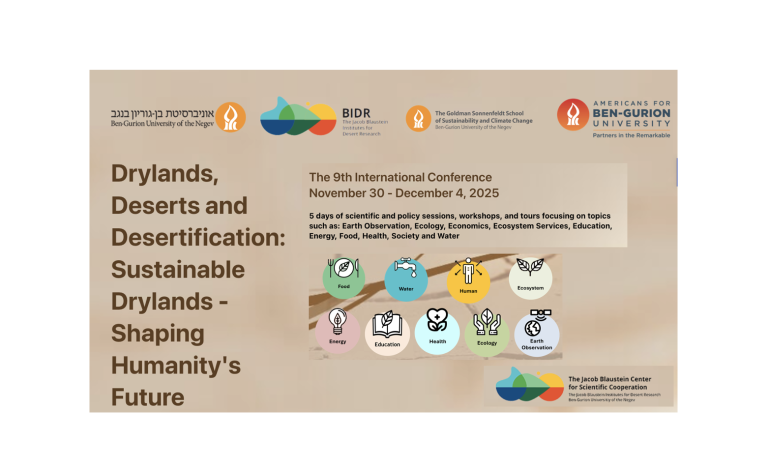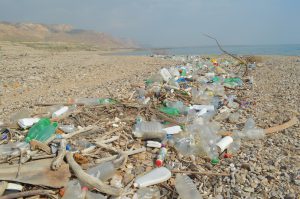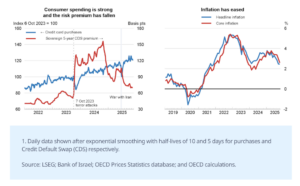Covid-19 : l'Université Bar-Ilan présente une stratégie de confinement alterné une semaine sur deux pour soulager l'économie
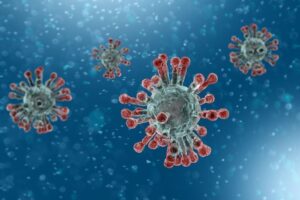
[:fr]
La stratégie de confinement alterné proposé par l’Université Bar-Ilan (Israël) pour soulager l’économie consiste à diviser la population en deux groupes qui alternent le confinement et l’activité classique à un rythme hebdomadaire. Depuis sa publication, cette stratégie a rencontré un immense succès. Le Dr Baruch Barzel et son équipe ont été approchés par le Conseil de sécurité nationale d’Israël et l’ont présentée au gouvernement. Ils ont également été contactés par les États-Unis et par 17 gouvernements à travers le monde. Le Dr Barzel pense qu’il y a de fortes chances que la proposition de son équipe soit mise en œuvre, probablement avec des mesures d’atténuation complémentaires.
La plupart des projections indiquent que la distanciation sociale, les restrictions de mobilité et le confinement complet peuvent s’étaler sur plusieurs semaines, voire sur plusieurs mois, un résultat potentiellement dévastateur pour la stabilité sociale et économique. L’un des défis est que les malades ne peuvent pas être isolés de manière sélective car de nombreux porteurs restent pré-symptomatiques pendant une période allant de plusieurs jours à deux semaines, des porteurs invisibles qui continuent d’être socialement actifs. Sans le confinement de l’ensemble de la population, l’isolement des porteurs ne peut être réalisé efficacement.

Pour contourner ce défi, les chercheurs de l’Université Bar-Ilan, dirigés par le Dr Baruch Barzel du Département de mathématiques, ont conçu une stratégie basée sur l’alternance des confinements : d’abord diviser la population en deux groupes, puis alterner ces groupes entre confinement et activité classique à un rythme hebdomadaire. Associée à l’isolement des porteurs symptomatiques et à l’adoption de gestes barrières quotidiens, cette stratégie peut aider à vaincre le virus, tout en maintenant une activité socio-économique à 50%.
La société civile serait donc divisée en deux groupes ayant peu d’interactions : une moitié active une semaine et l’autre active la semaine suivante. Cela ralentirait la propagation, mais son principal avantage est que cela permettrait d’isoler les porteurs invisibles, ceux qui sont pré-symptomatiques en période d’incubation. « Considérez les individus qui infectés pendant la semaine active. Ils sont maintenant en période pré-symptomatique, l’étape la plus dangereuse, où ils sont des porteurs invisibles. Dans le cadre d’un confinement alterné, ils entreraient maintenant en phase de confinement », explique le Dr Barzel.
«En restant à la maison pendant une semaine, ils commenceront très probablement à présenter des symptômes et resteront donc isolés jusqu’à la guérison complète. Après une semaine de confinement, s’ils ne présentent aucun symptôme, ils ne sont probablement pas infectés et peuvent participer à des activités sociales et professionnelles au cours de leur semaine active. Par conséquent, l’alternance du confinement avec l’isolement complet des porteurs symptomatiques garantit qu’à tout moment, la majorité des porteurs invisibles sont inactifs, car leur période d’incubation passe forcément par une phase de confinement.«
À l’heure actuelle, la plupart des gens sont extrêmement prudents et s’abstiennent de tout contact avec une personne présentant des symptômes. « Nous pensons que les porteurs invisibles sont les principaux contributeurs au nombre de cas de propagation. Notre stratégie est orientée vers ce défi : placer chaque personne en confinement hebdomadaire après avoir été potentiellement exposée pendant sa semaine active. Par conséquent, nous isolons efficacement non seulement les malades, mais aussi la majorité des porteurs pré-symptomatiques », explique Baruch Barzel.
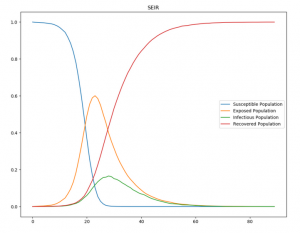 Baruch Barzel et son équipe ont simulé la propagation de COVID-19 à l’aide du modèle SEIR, en supposant que seuls les épandeurs invisibles contribuent à l’infection. Ce modèle suit le nombre d’individus lors de leur transition entre les différents stades de la maladie : sensibles (ceux qui sont disponibles pour contracter la maladie), exposés (ceux qui sont à leur stade pré-symptomatique), infectés (ceux qui développent des symptômes) et protégés (ceux qui sont déjà immunisés).
Baruch Barzel et son équipe ont simulé la propagation de COVID-19 à l’aide du modèle SEIR, en supposant que seuls les épandeurs invisibles contribuent à l’infection. Ce modèle suit le nombre d’individus lors de leur transition entre les différents stades de la maladie : sensibles (ceux qui sont disponibles pour contracter la maladie), exposés (ceux qui sont à leur stade pré-symptomatique), infectés (ceux qui développent des symptômes) et protégés (ceux qui sont déjà immunisés).
Ils ont constaté que leur stratégie réduit considérablement l’écart et aide à aplatir la courbe. «Nous pouvons faire plus si nous adoptons également un comportement responsable. Nous nous attendons à ce que même pendant leur semaine active, les gens continuent d’interagir avec prudence : éviter les contacts physiques, augmenter l’espace personnel et pratiquer un comportement de protection. Ces mesures supplémentaires, lorsqu’elles sont associées à notre stratégie de confinement alterné peut aider à inhiber la propagation, nous permettant de surmonter le COVID-19 avec des conséquences économiques raisonnables« , dit-il.
Il est toujours difficile de maintenir des mesures restrictives telles que les fermetures, car un certain pourcentage de la population peut ne pas coopérer, en particulier dans les sociétés démocratiques et individualistes. Les chercheurs ont donc intégré dans leur simulation une fraction de réfractaires qui restent actifs même pendant leur phase de confinement. Cela peut également concerner des personnes dispensées qui occupent des postes essentiels et ne peuvent pas être placées en confinement. Ils ont constaté que même moins de 30% des non-coopérants parviendraient à surmonter la propagation virale.
La succession hebdomadaire proposée vise à soutenir une économie fonctionnelle en ces temps difficiles. Les chercheurs estiment que fournir un débouché aux personnes pour poursuivre leur activité sociale et professionnelle, au moins à 50% de leur capacité, encouragera, en soi, la coopération, car il relâche une partie du stress individuel subi pendant le confinement.
Traduction/adaptation Esther Amar pour Israël Science Info
Publication dans arXiv.org avril 2020
arXiv.org is a free distribution service and an open-access archive for 1,685,599 scholarly articles in the fields of physics, mathematics, computer science, quantitative biology, quantitative finance, statistics, electrical engineering and systems science, and economics
[:en]
Alternating lockdown strategy involves splitting the population into two groups that alternate between lockdown and routine activity in weekly succession. Most projections indicate that social distancing – from mobility restrictions to complete lockdowns — may take many weeks, possibly even months, a potentially devastating outcome for social and economic stability. One of the challenges is that the sick cannot be selectively isolated, since many of the spreaders remain pre-symptomatic for a period ranging from several days to as much as two weeks – invisible spreaders that continue to be socially active. Hence, it seems that without a population-wide lockdown isolating the carriers cannot be achieved effectively.

To bypass this challenge, Bar-Ilan University researchers, led by Dr. Baruch Barzel of the Department of Mathematics, have devised a strategy based on alternating lockdowns: first splitting the population into two groups, then alternating these groups between lockdown and routine activity in weekly succession. Together with isolation of the symptomatic spreaders and the adoption of everyday prophylactic behaviors, this strategy can help defeat the virus, while sustaining socio-economic activity at a 50% level.
In the alternating lockdown routine, society will be partitioned into two groups, with little interaction between them — one half active this week, and the other active only the next. This will already slow the spread, but its main advantage is that it helps isolate the invisible spreaders, such as those who are pre-symptomatic carriers still in the incubation period. « Consider an individual who became infected during their active week. They are now in their pre-symptomatic period – the most dangerous stage, in which they are invisible spreaders. The crucial point is that, according to the alternating lock-down routine they are now scheduled to enter their lock-down phase » explains Dr. Barzel. « Staying at home for another week, they will most likely begin to exhibit symptoms, and therefore remain in isolation until full recovery. Indeed, if following a week of lock-down they show no symptoms, they are most likely uninfected and can partake in social and professional activities during their active week. Therefore, alternating lockdown with full isolation of symptomatic spreaders ensures that at all times, the majority of invisible spreaders are inactive, as their incubation period is naturally directed towards their lockdown phase. »
At present, most people are extremely cautious, and will refrain from any contact with someone showing symptoms. « Therefore, we believe that it is the invisible spreaders that are the main contributors to the proliferating case count. Our strategy is precisely directed at this challenge — placing each person on weekly lockdown after they were potentially exposed during their active week. Hence, we effectively isolate not just the sick, but also the majority of the pre-symptomatic carriers, » says Barzel.
 To examine this Barzel and team simulated the spread of COVID-19 using the SEIR model, assuming that only the invisible spreaders contribute to the infection. This model tracks the number of individuals as they transition between the different stages of the disease: Susceptible (those available to contract the disease), Exposed (those who are at their pre-symptomatic stage), Infected (those who develop symptoms), and Recovered (those who are already immune).They found that employing their strategy significantly reduces the spread and helps flatten the curve. « We can achieve more if we also adopt responsible behavior. Specifically, we expect that even during their active week, people will continue to interact with caution: avoid physical contact, increase personal space and practice hygienic behavior. These additional measures, when coupled with our alternating lockdown strategy, can help inhibit the spread, allowing us to overcome COVID-19 with reasonable economic consequences, » he says.
To examine this Barzel and team simulated the spread of COVID-19 using the SEIR model, assuming that only the invisible spreaders contribute to the infection. This model tracks the number of individuals as they transition between the different stages of the disease: Susceptible (those available to contract the disease), Exposed (those who are at their pre-symptomatic stage), Infected (those who develop symptoms), and Recovered (those who are already immune).They found that employing their strategy significantly reduces the spread and helps flatten the curve. « We can achieve more if we also adopt responsible behavior. Specifically, we expect that even during their active week, people will continue to interact with caution: avoid physical contact, increase personal space and practice hygienic behavior. These additional measures, when coupled with our alternating lockdown strategy, can help inhibit the spread, allowing us to overcome COVID-19 with reasonable economic consequences, » he says.
Sustaining restrictive measures such as lockdowns is always a challenge, since some percentage of the population may not cooperate, especially in democratic and individualistic societies. The researchers therefore allowed for a fraction of defectors who continue to be active even during their lockdown phase in their simulation. This can also represent exempt individuals who hold essential positions and cannot be under lockdown. They found that even under 30% of non-cooperators would still overcome the viral spread.
The proposed weekly succession is aimed to sustain a functional economy in these challenging times. The researchers believe that, providing an outlet for people to continue their social and professional activity, at least at 50% capacity, will, in and of itself encourage cooperation, as it relaxes some of the individual stress endured under lockdown.
Barzel and team’s mathematical analysis and numerical results, including all their codes, were recently published on the arXiv.org. Since publication the strategy has gained immense traction. Barzel and team have been approached by the Israel National Security Council and have presented the strategy to the academic committee advising the government. They were also contacted by international groups in the US advising 17 governments around the world. Barzel believes there is a good chance that his team’s suggestion will be implemented, most probably together with complementary mitigation measures.
Published in arXiv.org april 2020
arXiv.org is a free distribution service and an open-access archive for 1,685,599 scholarly articles in the fields of physics, mathematics, computer science, quantitative biology, quantitative finance, statistics, electrical engineering and systems science, and economics
[:]

